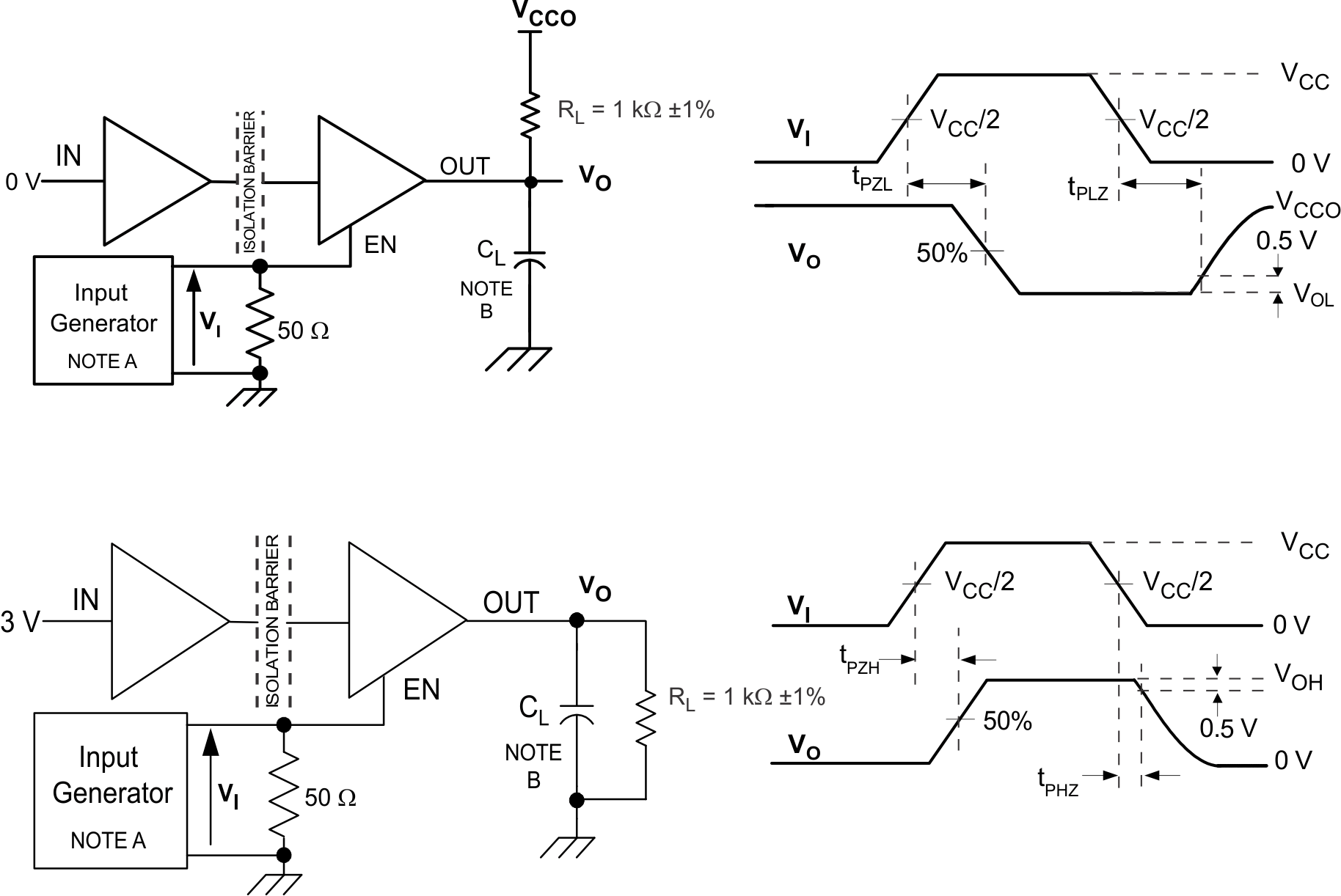SLLS867L September 2007 – October 2024 ISO7230C , ISO7231C , ISO7231M
PRODUCTION DATA
- 1
- 1 Features
- 2 Applications
- 3 Description
- 4 Device Comparison Table
- 5 Pin Configuration and Functions
-
6 Specifications
- 6.1 Absolute Maximum Ratings
- 6.2 ESD Ratings
- 6.3 Thermal Information
- 6.4 Recommended Operating Conditions
- 6.5 Power Ratings
- 6.6 Insulation Specifications
- 6.7 Safety-Related Certifications
- 6.8 Safety Limiting Values
- 6.9 Electrical Characteristics: VCC1 and VCC2 at 3.3 V
- 6.10 Electrical Characteristics: VCC1 and VCC2 at 5-V
- 6.11 Electrical Characteristics: VCC1 at 3.3-V, VCC2 at 5-V
- 6.12 Electrical Characteristics: VCC1 at 5-V, VCC2 at 3.3-V
- 6.13 Switching Characteristics: VCC1 and VCC2 at 3.3-V
- 6.14 Switching Characteristics: VCC1 and VCC2 at 5-V
- 6.15 Switching Characteristics: VCC1 at 3.3-V and VCC2 at 5-V
- 6.16 Switching Characteristics: VCC1 at 5-V, VCC2 at 3.3-V
- 6.17 Typical Characteristics
- 7 Parameter Measurement Information
- 8 Detailed Description
- 9 Application and Implementation
- 10Device and Documentation Support
- 11Revision History
- 12Mechanical, Packaging, and Orderable Information
Package Options
Refer to the PDF data sheet for device specific package drawings
Mechanical Data (Package|Pins)
- DW|16
Thermal pad, mechanical data (Package|Pins)
- DW|16
Orderable Information
7 Parameter Measurement Information

A. The input pulse is supplied by a
generator having the following characteristics: PRR ≤ 50 kHz, 50% duty cycle, tr
≤ 3 ns, tf ≤ 3 ns, ZO = 50 Ω. At the input, a 50-Ω resistor is required to
terminate the Input Generator signal. The 50-Ω is not needed in actual
application.
B. CL = 15 pF and includes
instrumentation and fixture capacitance within ±20%.
Figure 7-1 Switching
Characteristic Test Circuit and Voltage Waveforms
A. The input pulse is supplied by a
generator having the following characteristics: PRR ≤ 50 kHz, 50% duty cycle,
tr ≤ 3 ns, tf ≤ 3 ns, ZO = 50Ω.
B. CL = 15 pF and
includes instrumentation and fixture capacitance within ±20%.
Figure 7-2 Enable/Disable Propagation Delay Time Test Circuit and Waveform
A. The input pulse is supplied by a
generator having the following characteristics: PRR ≤ 50 kHz, 50% duty cycle,
tr ≤ 3 ns, tf ≤ 3 ns, ZO = 50 Ω.
B. CL = 15 pF and
includes instrumentation and fixture capacitance within ±20%.
Figure 7-3 Failsafe
Delay Time Test Circuit and Voltage Waveforms
A. CL = 15 pF and
includes instrumentation and fixture capacitance within ±20%.
Figure 7-4 Common-Mode Transient Immunity Test Circuit
PRBS bit
pattern run length is 216 – 1. Transition time is 800 ps. NRZ data
input has no more than five consecutive 1s or 0s.
Figure 7-5 Peak-to-Peak Eye-Pattern Jitter Test Circuit and Voltage Waveform